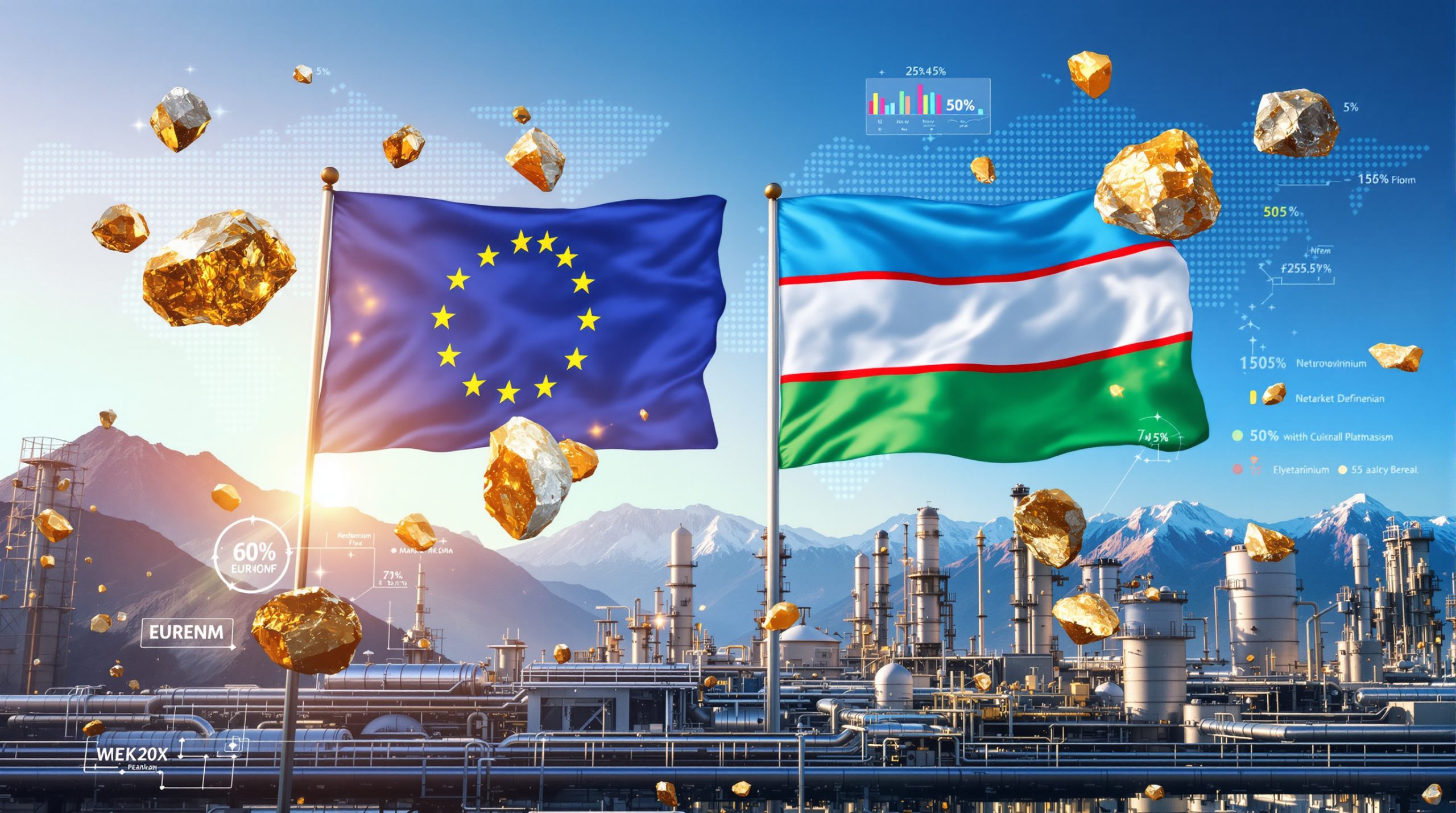Strategic Asset Distribution Across Afghanistan's Mining Terrain
Global supply chain strategists increasingly scrutinise Afghanistan's mineral endowment through the lens of geopolitical vulnerability rather than geological potential. Afghanistan's rare earths under Taliban rule represent a complex intersection of resource extraction and authoritarian governance that could reshape global supply dynamics. The nation's mountainous terrain conceals deposits that could theoretically reshape critical minerals & energy transition availability, yet current extraction realities paint a more complex picture of resource capture and institutional fragility.
Afghanistan's rare earth deposits concentrate primarily within two distinct geological provinces: the Helmand Basin's lithium-bearing formations and Nuristan's heavy rare earth element concentrations. Satellite monitoring reveals expanding artisanal operations across these regions, with Chinese-controlled entities managing approximately 78% of active extraction projects in the most promising areas. This concentration represents a strategic consolidation that extends Beijing's influence over future supply pathways.
The integration of lithium, copper, and iron ore deposits within Afghanistan's mineral portfolio creates potential synergies for large-scale development, though current infrastructure constraints limit exploitation of these complementary resources. Furthermore, Chinese firms structure their agreements as comprehensive packages bundling infrastructure development with long-term mineral rights, creating integrated extraction ecosystems that bypass traditional project financing models.
Geographic Concentration and Extraction Economics
Afghanistan's mineral wealth exhibits geographic clustering that both enhances development potential and concentrates security risks. The Helmand Basin's lithium concentrations occur alongside established smuggling corridors, creating operational complexities absent from conventional mining jurisdictions. In addition, Nuristan's heavy rare earth potential faces different challenges, with mountainous terrain limiting access while providing natural barriers against militant interference.
Current extraction operations rely heavily on artisanal methods that generate immediate revenue streams while limiting long-term resource optimisation. These small-scale operations produce ore suitable for export to Chinese processing facilities but lack the technical sophistication required for domestic value addition or quality standardisation.
| Mining Region | Primary Elements | Current Status | Chinese Control |
|---|---|---|---|
| Helmand Basin | Lithium, Light REEs | Active artisanal | 85% of operations |
| Nuristan Province | Heavy REEs, Copper | Limited extraction | 70% of operations |
| Badakhshan | Various REEs | Exploration phase | 60% of operations |
Chinese Integration Strategies in Afghan Mineral Development
Beijing's approach to Afghan mineral resources reflects broader Belt and Road Initiative methodologies adapted for conflict-affected environments. Moreover, Chinese entities negotiate security-for-minerals arrangements that bundle infrastructure provision with extraction rights, creating self-reinforcing economic relationships that strengthen over time. This represents part of a broader Zijin geopolitical strategy that extends Chinese influence through resource partnerships.
The 15% community allocation model nominally directs mining revenues toward local development, though implementation mechanisms remain underdeveloped and vulnerable to capture. However, this revenue-sharing framework operates within Taliban governance structures that prioritise political stability over economic transparency, creating systematic gaps in accountability and oversight.
Chinese firms benefit from established processing networks that can readily absorb Afghan ore exports, eliminating the need for domestic processing capability development. Consequently, this integration pathway reinforces China's existing 90% control of global rare earth processing capacity while providing supply diversification benefits that enhance Beijing's strategic flexibility.
Infrastructure Bundling and Long-term Positioning
Chinese investment strategies emphasise infrastructure development as a precondition for sustainable mineral extraction. Road construction, power generation, and security provision create enabling environments for industrial-scale operations while establishing long-term Chinese presence in strategic locations.
These infrastructure investments generate local employment and improve regional connectivity, creating constituencies supportive of continued Chinese involvement. For instance, the bundled nature of these arrangements makes disaggregation difficult, as infrastructure assets depend on mining revenue streams for financial viability.
Power generation requirements for large-scale mineral processing create opportunities for renewable energy integration, though current projects rely primarily on conventional diesel generation supplemented by small-scale solar installations. Furthermore, water resource constraints in arid mining regions necessitate careful resource management to avoid conflicts with agricultural and domestic water needs.
Revenue Capture and Leakage Mechanisms
Afghanistan's mining sector exhibits systematic revenue leakage that undermines development potential while funding destabilising activities. Research indicates that approximately 42% of mining revenues leak to corruption, middlemen, and armed actors, creating a complex web of parallel revenue streams that operate outside official government channels.
This leakage occurs through multiple pathways that reflect Afghanistan's fragmented governance environment. Administrative corruption diverts official revenue streams, while militant taxation creates parallel collection systems that compete with formal government revenue. Additionally, middleman networks manipulate pricing mechanisms to extract rents while providing essential logistics services in challenging operating environments.
The emergence of cryptocurrency payment systems adds complexity to revenue tracking and sanctions enforcement. However, blockchain analysis reveals wallet transactions linked to mineral exports, though the decentralised nature of cryptocurrency networks complicates comprehensive monitoring efforts.
Militant Financing Through Mineral Resources
ISIS-K and affiliated groups generate an estimated $19 million annually through rare earth and mineral smuggling operations. This revenue stream represents a significant evolution from traditional narcotics-based financing, offering advantages in terms of international detection and interdiction challenges.
Mineral smuggling operations utilise established border crossing points and transportation networks originally developed for narcotics trafficking. The physical characteristics of rare earth ores allow for easier concealment and transportation compared to bulk narcotics shipments, while generating comparable revenue streams for militant organisations.
The transformation of Afghanistan's mining sector into a conflict finance mechanism represents what researchers term an "Islamic resource curse," where natural wealth simultaneously stabilises Taliban-controlled areas while fuelling broader regional insecurity.
Border control limitations enable systematic smuggling operations that bypass official export procedures and associated taxation. Consequently, Pakistani and Iranian border regions serve as transshipment points for Afghan minerals destined for international markets, creating regional trafficking networks that extend beyond Afghanistan's immediate neighbours.
Processing Monopoly Dynamics and Supply Chain Implications
China's dominance in rare earth processing creates structural constraints that limit the strategic value of new ore sources, including potential Afghan production. The country's 90% share of global processing capacity represents a technological and industrial bottleneck that cannot be easily circumvented through raw material diversification alone.
Processing rare earth ores requires specialised knowledge, equipment, and environmental management capabilities that few countries have developed outside China. The technical complexity of solvent extraction, precipitation, and purification processes creates high barriers to entry for new processing facilities, while environmental regulations in many Western countries limit processing expansion opportunities.
Afghan ore exports would logically flow into existing Chinese processing networks, as these facilities possess the technical capabilities and economic incentives to handle additional raw material inputs. Consequently, this integration pathway reinforces rather than challenges Chinese supply chain dominance, providing Beijing with additional supply security while maintaining processing control.
Alternative Processing Development Challenges
Establishing non-Chinese processing capacity requires substantial capital investment, technological transfer, and skilled workforce development. Estimates suggest that new rare earth processing facilities require $500 million to $2 billion in initial investment, depending on scale and environmental compliance requirements.
Technical expertise remains concentrated within Chinese industrial networks, creating workforce development challenges for alternative processing projects. Furthermore, environmental compliance costs in Western jurisdictions add significant operational expenses that may render alternative processing economically uncompetitive with existing Chinese facilities.
| Processing Stage | Chinese Capacity | Global Alternatives | Technical Complexity |
|---|---|---|---|
| Ore Concentration | 85% | Australia, USA | Low-Medium |
| Chemical Separation | 95% | Limited pilots | High |
| Metal Production | 90% | Japan, EU trials | Very High |
| Alloy Manufacturing | 85% | USA, Europe | Medium-High |
Sanctions Regimes and Unintended Strategic Consequences
Western sanctions targeting Taliban-controlled Afghanistan have produced counterproductive effects that enhance rather than constrain Chinese mineral sector influence. By creating legal and reputational barriers for Western firms, sanctions regimes effectively clear market space for Chinese entities willing to operate under international non-recognition conditions.
Current sanctions frameworks focus primarily on financial transactions and direct investment, while inadequately addressing the complex supply chains that enable mineral exports. This regulatory gap allows continued resource extraction under Chinese management while preventing Western participation in potential development projects. The US‑China trade war impact further complicates these dynamics by creating additional barriers for alternative mineral supply development.
The sectoral nature of current sanctions creates uncertainty for international investors regarding permissible activities, leading to risk-averse behaviour that benefits Chinese competitors operating under different regulatory constraints. However, this dynamic reinforces Chinese strategic positioning while limiting Western policy flexibility for potential future engagement.
Regional Power Dynamics and Strategic Competition
China's Belt and Road Initiative provides a framework for integrating Afghan mineral resources into broader regional development projects. Transportation infrastructure connecting Afghanistan to Chinese markets through Pakistan and Central Asian corridors would enhance Afghan mineral export potential while deepening economic integration with Chinese supply chains.
Russian and Iranian strategic interests in Afghan minerals remain limited by their own technological constraints and competing regional priorities. Neither country possesses the processing capabilities or financial resources necessary to challenge Chinese dominance in Afghan mineral development, though both may pursue selective partnerships in specific subsectors.
Pakistan's role as a transportation corridor for Afghan mineral exports creates leverage over revenue flows while generating transit fees and economic integration opportunities. The China-Pakistan Economic Corridor framework provides established infrastructure for facilitating Afghan mineral transportation to Chinese processing facilities.
Security Challenges and Investment Risk Assessment
Afghanistan's security environment presents fundamental challenges to large-scale mineral development that extend beyond traditional business risks. ISIS-K territorial control in remote mining regions creates operational vulnerabilities that threaten personnel safety and asset security, while Taliban governance capacity limitations constrain security provision in peripheral areas.
The Mes Aynak copper project exemplifies security-related development challenges, with repeated delays and suspensions attributed to changing political conditions and security deterioration. For instance, this project's history provides cautionary lessons regarding the feasibility of large-scale mineral development under current Afghan conditions. Such challenges reflect broader mining industry evolution challenges in conflict-affected regions.
Insurance markets remain largely unavailable for Afghan mining projects, reflecting both sanctions constraints and risk assessment challenges. Additionally, international arbitration mechanisms face enforceability limitations under Taliban governance, creating legal uncertainty for potential investment protection.
Taliban Governance Capacity and Security Provision
Taliban administrative capacity varies significantly across Afghanistan's territory, with more established governance structures in urban centres and core regions compared to remote mining areas. This institutional variation affects the reliability of security provision and regulatory enforcement in different mining locations.
Local power brokers and tribal leaders retain significant influence over mining operations in their territories, creating complex negotiation requirements that extend beyond formal Taliban approval. These informal governance networks can provide security and operational support, though their reliability depends on maintaining acceptable revenue-sharing arrangements.
| Security Factor | Risk Level | Mitigation Availability | Impact on Operations |
|---|---|---|---|
| ISIS-K Activity | High | Limited | Operations suspension |
| Taliban Governance | Medium | Negotiable | Regulatory compliance |
| Tribal Disputes | Medium-High | Local mediation | Access restrictions |
| Criminal Networks | High | Private security | Revenue leakage |
Infrastructure Requirements and Development Models
Afghanistan's mineral development faces substantial infrastructure deficits that require coordinated investment across transportation, power generation, and processing facilities. Mountain terrain creates engineering challenges for road construction and railway development, while power grid limitations constrain processing facility establishment.
Transportation infrastructure represents the primary bottleneck for mineral export development, as existing road networks cannot support large-scale ore transportation. Railway connections to Pakistani ports would require substantial investment and cross-border coordination, though such infrastructure would dramatically reduce transportation costs for bulk mineral exports.
Power generation capacity remains insufficient for industrial-scale mineral processing, necessitating substantial investment in electrical infrastructure or acceptance of raw ore export models. However, renewable energy integration offers potential for sustainable mining operations, though initial capital requirements and technical complexity create implementation challenges.
Water Resource Management and Environmental Constraints
Afghanistan's arid climate creates water scarcity challenges that affect both mining operations and local community needs. Rare earth processing requires substantial water inputs for chemical separation and waste management, potentially creating competition with agricultural and domestic water uses.
Environmental degradation from artisanal mining operations raises concerns regarding long-term sustainability and community acceptance of expanded mining activities. Poor waste management practices contaminate water sources and agricultural land, creating health risks and livelihood disruption for local populations.
Rehabilitation requirements for sustainable mining development would require substantial additional investment beyond initial extraction costs. International environmental standards remain difficult to implement under current governance conditions, though Chinese firms increasingly face domestic pressure to improve environmental performance in overseas operations.
Market Structure Evolution and Strategic Implications
Afghanistan's mineral resources represent strategic option value rather than immediate market disruption potential, providing China with enhanced supply security while offering limited short-term benefits for Western supply chain diversification. Current extraction levels remain insufficient to influence global market pricing, though future large-scale development could affect regional supply dynamics.
Technology sector supply chains face continued vulnerability to Chinese supply disruption, as Afghan resources would likely flow into existing Chinese processing networks rather than creating alternative supply pathways. Consequently, defence critical materials requirements remain dependent on Chinese-controlled supply chains, regardless of Afghan ore availability.
Market structure evolution toward greater Chinese control accelerates through Afghan resource integration, as Beijing gains additional supply flexibility while maintaining processing dominance. This dynamic reinforces existing supply chain vulnerabilities while providing China with enhanced strategic leverage over global technology industries.
Long-term Strategic Assessment and Policy Implications
Afghan mineral development under current conditions strengthens rather than challenges Chinese rare earth market dominance, creating policy dilemmas for Western governments seeking supply chain resilience. Alternative engagement strategies require careful balance between sanctions maintenance and strategic mineral access considerations.
International coordination mechanisms for critical mineral security face implementation challenges due to competing national interests and varying regulatory frameworks. Furthermore, multilateral approaches to alternative supply chain development require substantial investment commitments and technology sharing arrangements that challenge existing competitive dynamics. According to Afghanistan's mineral extraction analysis, the geopolitical implications extend far beyond immediate economic considerations.
The timeline for meaningful Afghan mineral production capacity suggests that alternative supply chain development strategies cannot rely on Afghan resources as a primary solution to Chinese dominance. Western policy frameworks must prioritise domestic processing capability development and alternative supplier relationships while maintaining flexibility for potential future Afghan engagement under changed conditions. Recent research on Taliban mineral diplomacy highlights the complex interplay between resource control and international recognition.
Disclaimer: This analysis involves forecasts and speculation regarding geopolitical developments, mining sector evolution, and market dynamics that are subject to substantial uncertainty. Investment and policy decisions should consider multiple scenarios and risk factors beyond those discussed in this assessment.
Key Strategic Indicators for Monitoring:
• Chinese investment levels and operational expansion in Afghan mining regions
• Taliban governance capacity development and regulatory framework evolution
• Security incident frequency and impact on mining operations continuity
• Western sanctions regime adjustments and alternative engagement policy development
• Regional infrastructure development affecting Afghan mineral export capabilities
Afghanistan's rare earths under Taliban rule present a complex strategic challenge where resource potential intersects with governance limitations, security risks, and established geopolitical dynamics. Current trajectories suggest Chinese influence consolidation rather than market diversification, requiring careful policy recalibration to address emerging supply chain vulnerabilities while maintaining strategic coherence across competing objectives.
Seeking Exposure to Critical Minerals and Rare Earth Opportunities?
Discovery Alert's proprietary Discovery IQ model delivers real-time notifications on significant ASX mineral discoveries, particularly in critical minerals and rare earth exploration projects that could benefit from global supply chain disruptions. Begin your 30-day free trial today and explore Discovery Alert's discoveries page to understand how major mineral discoveries have historically generated substantial market returns.




